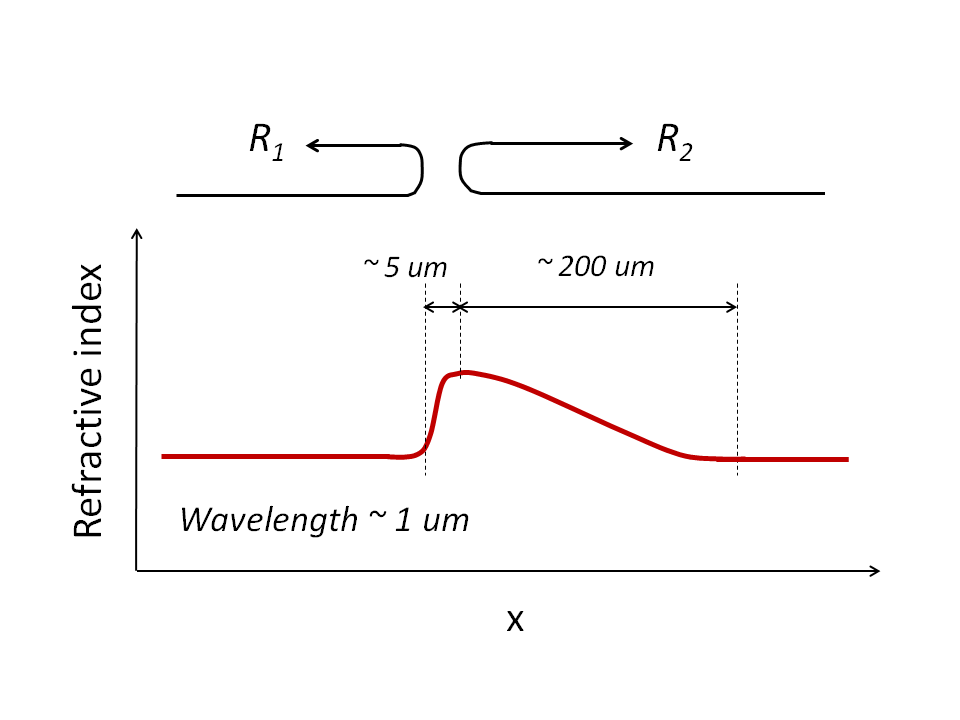 Hi. I have a question on reciprocity in optical reflection.
Hi. I have a question on reciprocity in optical reflection.
We have a refractive index profile (as a function of x) that continuously varies (Figure). At x=-inf and +inf, n = n1. Around x=0, the refractive index increases to n2 and then decreases again to n1. The refractive index profile, however, is asymmetric around x=0, meaning that n changes abruptly for n1 -> n2, while it changes slowly for n2 -> n1. By "abruptly" and "slowly", I meant based on the length over which the change occurs vs. the wavelength of light. In this case, which reflectivity is larger? R1 or R2? Or are they the same? Can anybody provide an intuitive explanation?
